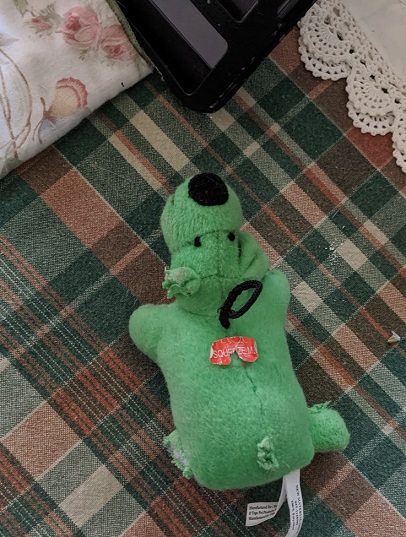Good Monday Morning. I hope everyone is staying well and safe. This picture has nothing to do with the content of today’s post, I just thought it might bring a smile.
In the spirit of wild cats everywhere, and many domestic ones, my Harry kitty brought me his latest kill and put it on the kitchen table. I guess he thought I needed some extra protein for breakfast.

The other day a friend sent me this information from John Hopkins University. It was compiled by an Assistant Professor in infectious diseases at the university. I thought this was well worth sharing here. Things are getting a lot more scary as the number of cases of the nasty COVID-19 increases daily. We need to do what we can to stay safe.
* The virus is not a living organism, but a protein molecule (DNA) covered by a protective layer of lipid (fat), which, when absorbed by the cells of the ocular, nasal or buccal mucosa, changes their genetic code. (mutation) and convert them into aggressor and multiplier cells.
* Since the virus is not a living organism but a protein molecule, it is not killed, but decays on its own. The disintegration time depends on the temperature, humidity and type of material where it lies.
* The virus is very fragile; the only thing that protects it is a thin outer layer of fat. That is why any soap or detergent is the best remedy, because the foam CUTS the FAT (that is why you have to rub so much: for 20 seconds or more, to make a lot of foam).
By dissolving the fat layer, the protein molecule disperses and breaks down on its own.
* HEAT melts fat; this is why it is so good to use water above 25 degrees Celsius for washing hands, clothes and everything. In addition, hot water makes more foam and that makes it even more useful.
* Alcohol or any mixture with alcohol over 65% DISSOLVES ANY FAT, especially the external lipid layer of the virus.
* Any mix with 1 part bleach and 5 parts water directly dissolves the protein, breaks it down from the inside.
* NO BACTERICIDE OR ANTIBIOTIC HELPS. The virus is not a living organism like bacteria; antibodies cannot kill what is not alive.
* NEVER shake used or unused clothing, sheets or cloth. While the virus is glued to a porous surface, it is very inert and disintegrates only:
- between 3 hours (fabric and porous)
- 4 hours (copper and wood)
- 24 hours (cardboard),- 42 hours (metal)
- 72 hours (plastic).
But if you shake fabric, or use a feather duster, the virus molecules float in the air for up to 3 hours and can lodge in your nose.
* The virus molecules remain very stable in external cold, or artificial as air conditioners in houses and cars.
They also need moisture to stay stable, and especially darkness. Therefore, dehumidified, dry, warm and bright environments will degrade it faster.
* UV LIGHT on any object that may contain the virus breaks down the virus protein. For example, to disinfect and reuse a mask is okay. Be careful, it also breaks down collagen (which is protein) in the skin.
* The virus CANNOT go through healthy skin.
* Vinegar is NOT useful because it does not break down the protective layer of fat.
* NO SPIRITS, NOR VODKA, HELP. The strongest vodka is 40% alcohol, and you need 65%. LISTERINE, however works. It is 65% alcohol.
* The more confined the space, the more concentration of the virus there can be. The more open or naturally ventilated, the less.
* You have to wash your hands before and after touching your nose, eyes, and mouth. Also wash after touching food, locks, knobs, switches, remote control, cell phone, watches, computers, desks, TV, etc. And when using the bathroom.
* You have to MOISTERIZE DRY HANDS because of so much washing because the virus molecules can hide in the micro cracks. The thicker the moisturizer, the better.
* Also keep your NAILS SHORT so that the virus does not hide there.
John Hopkins also has information on the development of a vaccine.
If you want a more in-depth understanding of the COVID 19 virus, check out this free online course offered by John Hopkins.
Johns Hopkins will offer a free online course about the coronavirus pandemic and how it can be combated through epidemiology. Offered publicly on the e-learning platform Coursera, the five-hour course is now open for enrollment and runs March 31 through April 14.
This free, beginner-level course is designed for those who want a better understanding of how epidemiologists identify and measure infectious disease outbreaks such as COVID-19. The course aims to explore the science behind pressing questions such as how many people have been infected, how infections are identified and measured, how infectious is the virus, and what can be done to combat it.
The course is led by three epidemiologists from the Bloomberg School of Public Health
That’s all from me for today, folks. Wherever you are, I hope you can stay well and healthy. And let’s not allow this pandemic to crush our spirits. I know it may be hard sometimes. It certainly has been for so many of us, but we are strong.
